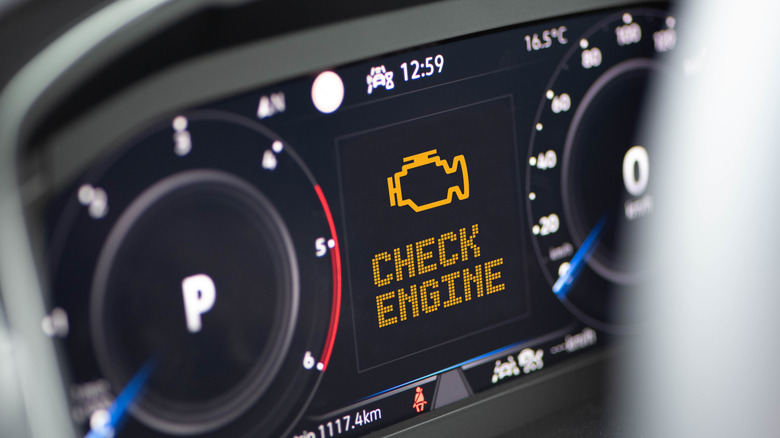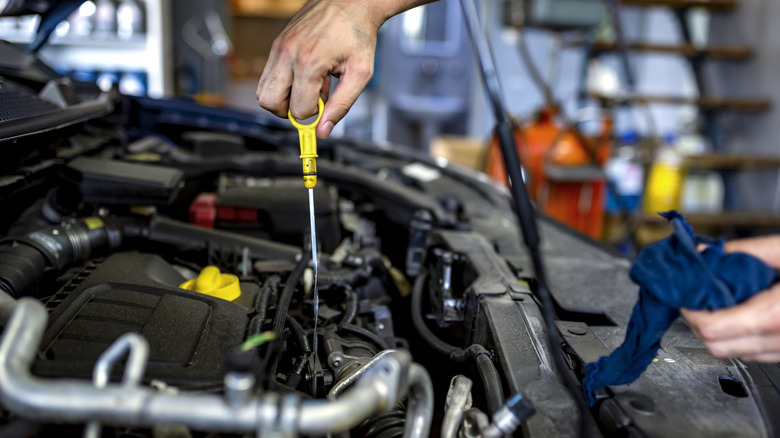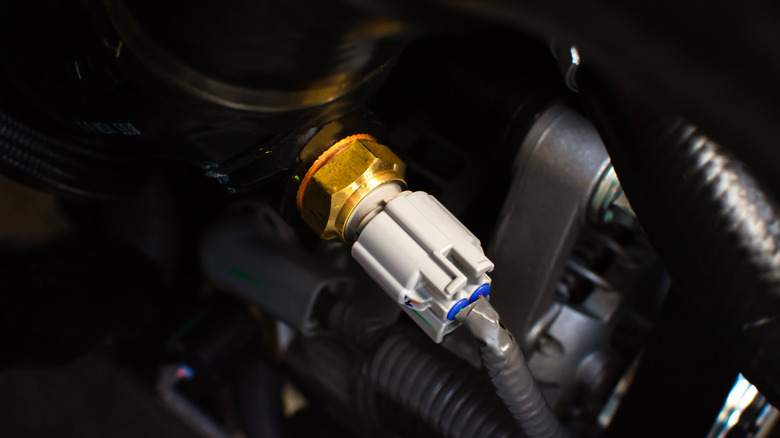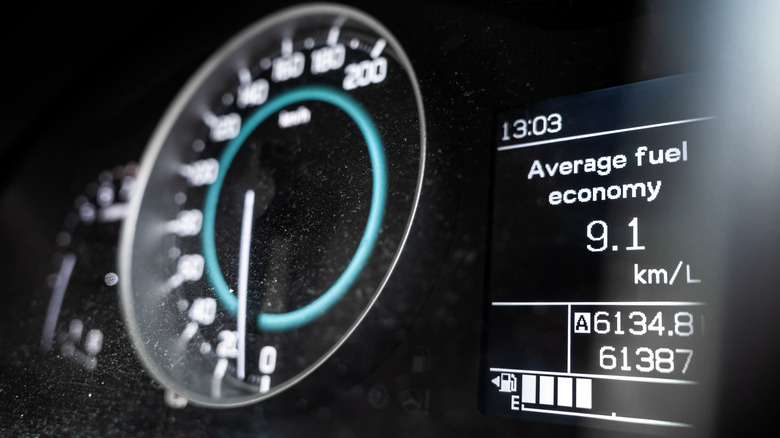Why Your Check Engine Light Is On After An Oil Change
Few things are more frustrating for drivers than the dreaded check engine light, which signals a potential problem with the car's engine without providing a specific hint about the issue. This frustration only grows when the light turns on after an oil change. You're left questioning whether you should drive your car if the check engine light flashes. And what should've been simple maintenance suddenly feels like a much bigger issue.
As someone who has spent years working in automotive diagnostics and maintenance, I've come across many instances of the check engine light illuminating either during routine maintenance or a few hours or days after it's complete. Sometimes, the light may be accompanied by symptoms like engine noises and fuel consumption issues. However, there are easy ways to fix these post-oil-change issues.
While there are a few reasons your check engine light may be on, the good news is that, in most cases, the causes are minor and, therefore, easy to diagnose and fix. During an oil change, small errors — like a loose oil cap — can lead to this warning light. Sometimes, it's a matter of resetting the vehicle's computer system, and other times, it involves taking a closer look under the hood.
Ignoring the issue can lead to problems with the car's performance or even repairs that could eventually set you back hundreds if not thousands of dollars. So why is the check engine light on after an oil change, and what can you do about it?
Reasons your check engine light might appear post-oil change
One of the most common reasons the check engine light flashes after an oil change is a loose oil cap. This cap maintains the pressure within the engine while keeping out contaminants like dirt and debris. When it isn't secured properly, it can create a vacuum leak, one of the causes of low engine oil pressure. This leads to excessive wear, reduced engine performance, and a check engine light. To correct it, make sure the engine oil cap is properly secured.
Another cause is the wrong oil type. Every engine requires oil with specific properties, and using the wrong type of oil can result in poor performance. The check engine light might come on if the oil doesn't meet the manufacturer's specifications. The classifications of motor oil your engine accepts are found on the oil fill cap and can be verified via the owner's manual.
A clogged or improperly installed oil filter can lead to restricted oil flow, causing the engine to operate under stress. In this case, you'll find the check engine light accompanied by strange noises. An air leak in the intake system can also trigger the check engine light after an oil change. During the change, hoses and connectors in the intake may be dislodged or damaged, which would bring unregulated air into the engine. This can disrupt the air-fuel mixture ratios, leading to issues such as rough idle, reduced engine power, and a check engine light.
How sensor issues might trigger the check engine light
Modern vehicles rely on sensors to monitor and regulate engine performance. These sensors provide data on several parameters to the car's electronic control unit. This lets the computer adjust things like timing and fuel delivery. A minor disruption during an oil change can lead to issues. One common problem is a malfunctioning oil pressure sensor, which tracks the engine's oil pressure and levels. If the sensor is damaged or incorrectly calibrated during the oil change, it can send inadequate readings to the control unit, prompting the check engine light.
Another issue often involves the mass air flow sensor, which measures the volume of air entering the engine. If this sensor is disturbed or contaminated during the oil change, it is likely to send the wrong readings to the vehicle's computer. This can lead to issues like poor acceleration or rough idling, alongside the check engine light. Cleaning or recalibrating the sensor can fix the issue.
Finally, a sensor reset might be required after an oil change. The vehicle's control unit may need to acknowledge the updated oil and filter to function properly. Skipping the sensor reset can lead to glitches, with the check engine light illuminating as a result. Resetting the system — typically with a diagnostic scanner — resolves the issue.
Signs to look out for after an oil change
Your car may exhibit signs before or alongside the check engine light to indicate issues that require attention. One indicator is the oil pressure warning light. This light, while often mistaken for a routine oil change reminder, indicates one of three issues: insufficient oil pressure, low oil levels, or high oil temperature. Ignoring this light could set you up for issues like engine overheating, wear and tear caused by low engine oil levels, and, by extension, engine damage.
Also, if you hear unusual engine noises like knocking, ticking, or grinding after an oil change, you may want to get your car examined. This is where knowing the worst sounds your car can make and what they mean can help you narrow down the real culprit. Knocking or pinging sounds usually point to ignition timing or low-quality fuel, while grinding noises point to bearings. Ticking noises, on the other hand, suggest low oil levels or a failing filter. Any of these sounds indicates that there's something wrong internally.
Reduced engine performance is another early sign of problems caused by a loose oil cap or clogged filter. A filter clogged with dirt and debris restricts airflow into the engine and disrupts the air-fuel ratio required for combustion. If you notice low power, poor fuel economy, or sluggish acceleration after an engine oil change, it's likely that the new air filter was improperly installed, or that the old filter wasn't replaced.



